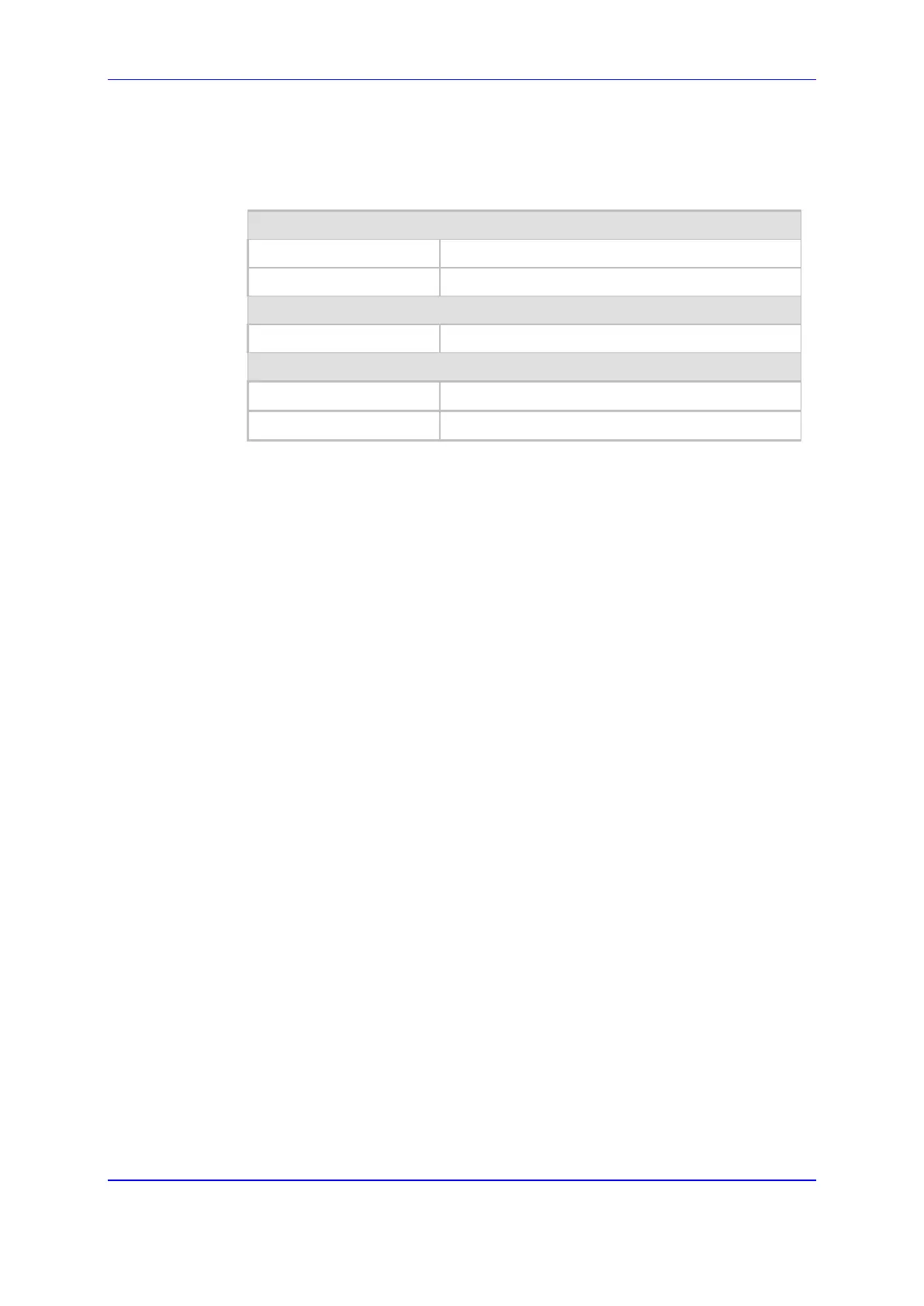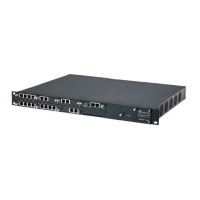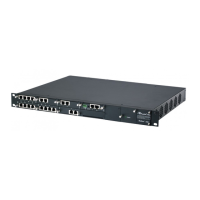Version 7.2 713 Mediant 1000B Gateway & E-SBC
User's Manual 34. Routing SBC
• Routes calls from the ITSP (identified by the source tag name-value
"Type=ITSP") to the IP PBXs (identified by the specific port assigned to the IP
PBX by the value of the destination tag name "Port"):
General
Index
2
Name
ITSP-to-PBX
Match
Source Tag
Type=ITSP
Action
Destination Type
Destination Tag
Routing Tag Name
Port
34.3 Configuring SIP Response Codes for Alternative
Routing Reasons
The Alternative Routing Reasons table lets you configure up to 20 SIP response codes for
call release (termination) reasons. If a call (outgoing SIP dialog-initiating methods, e.g.,
INVITE, OPTIONS, and SUBSCRIBE messages) is released as a result of a configured
SIP code (e.g., SIP 406), the device does alternative routing as follows: If the destination
Proxy Set is configured with multiple IP addresses, the device first attempts to route the
call to one of these IP addresses, starting with the first listed address. If unsuccessful, the
device then searches for an alternative routing rule in the IP-to-IP Routing table (see
'Configuring SBC IP-to-IP Routing Rules' on page 695).
Typically, the device performs alternative routing when there is no response at all to an
INVITE message. This is done after a user-defined number of INVITE re-transmissions,
configured by the SIPMaxRtx parameter. In such a scenario, the device issues itself the
SIP response code 408 (Request Timeout). Alternative routing is only done if you have
configured the response code in the Alternative Routing Reasons table.
You can also configure alternative routing for the following proprietary response codes, if
configured in the table, that are issued by the device itself:
805 IP Profile Call Limit: The device generates the response code when Call
Admission Control (CAC) limits (e.g., maximum concurrent calls) are exceeded for an
IP Group (or SRD). The CAC rules are configured in the Admission Control table (see
''Configuring Admission Control'' on page
683). When this occurs, the device sends a
SIP 480 (Temporarily Unavailable) response to the SIP entity. In such a scenario, an
alternative route configured in the IP-to-IP Routing table can be used.
806 Media Limits Exceeded: The device generates the response code when the call
is terminated due to crossed user-defined thresholds of QoE metrics such as MOS,
packet delay, and packet loss (see ''Configuring Quality of Experience Profiles'' on
page
315) and/or media bandwidth (see ''Configuring Bandwidth Profiles'' on page
320). When this occurs, the device sends a SIP 480 (Temporarily Unavailable)
response to the SIP entity. This is configured by 1) assigning an IP Group a QoE
and/or Bandwidth profile that rejects calls if the threshold is crossed, 2) configuring
806 in the Alternative Routing Reasons table and 3) configuring an alternative routing
rule.

